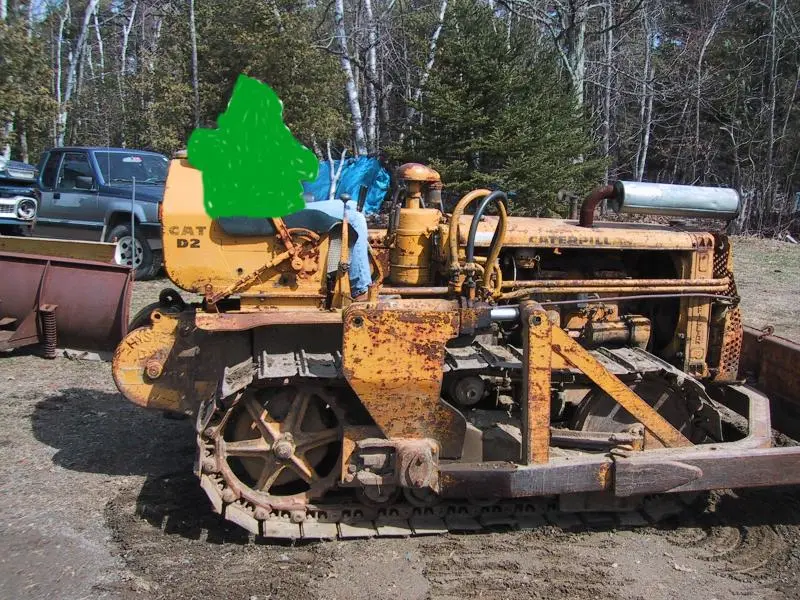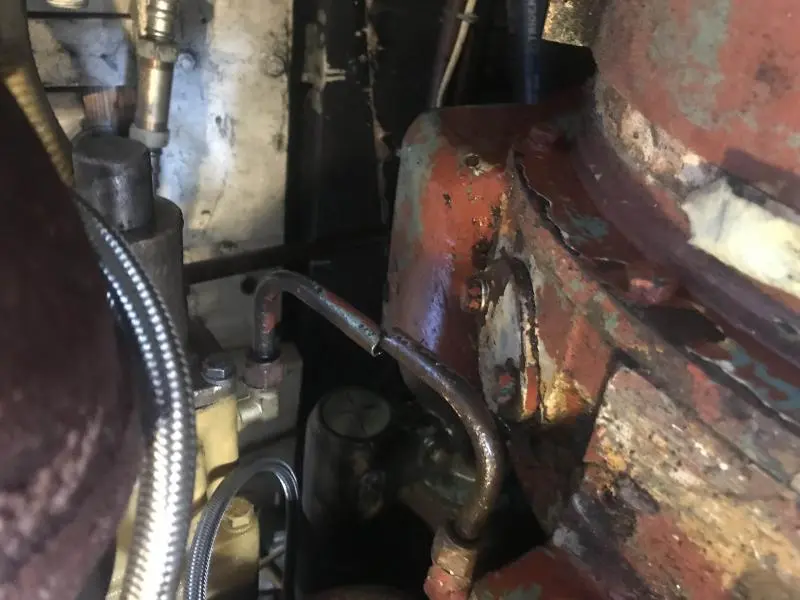
Oil coolers would have to be water to oil on a marine engine. TYPICALLY cooler failures put oil in coolant if they happen while running, but can easily put coolant in oil if the pressure differential is the opposite way for any reason or when the engine is stopped.
So first step is to remove or isolate oil cooler core and pressure test. If it tests out good, then proceed with the major stuff. If it tests bad, you saved yourself a bunch of trouble.
I have found over the years it pays to do diagnostics until you know as much as possible about the leak BEFORE tearing into an engine. Once someone tears into it, you can get fooled inspecting removed gaskets, ferrules etc and convince yourself your repair will take care of it and find out later the problem was somewhere else.
To diagnose this, if the cooler tests good, I would remove the inspection plate on the side of the engine. Then pressurize the cooling system and watch where the leak drips down from. In a boat, this may be impossible without an inspection camera, but even if you had to buy one or stick a cell phone under there, you could tell if the coolant was coming from inside a cylinder (precombustion chamber or head gasket leaking or liner pitted through) outside a cylinder (lower cylinder liner seals failing) or coming down the oil drain back passages into the camshaft and lifter area from the rocker box on top.
It is a simple thing to remove the valve cover at this time, and look for leakage under there. I can't remember which series D311 you have, but the old ones at least should have a row of soft "freeze" plugs down the center of the head under the rocker arm assembly. I lucked into finding one that had a pin hole rusted in it. I was in there to retorque the head fasteners, didn't even know there were freeze plugs under there!
All that being said, I expect you will find a lower cylinder liner seal has failed which would require a disassembly to the point of an IN-Frame overhaul to replace the o-ring seals.
I had good luck sealing up a FAST leak with a radiator stopleak product called DIKE pumped directly into the water jacket through the block drain plug. I had drained the block and then put in a pint of DIKE mixed in a half gallon of coolant and let it sit overnight before filling the system with coolant and running the engine.
I had collected probably 5 gallons of plain water in the bottom of the oil pan, but had not run the engine, so I simply drained it out until I got to oil and then ran the engine until it was hot before changing the oil and filter. Oil stayed good and black after that. You would probably be better off to drain the coolant contaminated milky oil, change the filter and refill with some cheap oil to run it until the leak is stopped before changing it again.
I think lower liner seal leaks are a good candidate for stopleak products to work. Any solid material in the coolant tends to collect in that area anyway. I bet there are a significant number of old engines like mine that would start leaking if the sediment was washed away from that area which is what I did to cause the leak in the first place. It was so bad I could watch the level of the water dropping in the top of the radiator! I could not run the engine with that going on, so I elected to try pumping the stop leak directly into the block instead of adding it to the radiator like normal. You might have good results adding it to the coolant. DIKE is a good product, but I think many others would have done the job as well.
I see the plugs on one view of the cylinder head. Looks like they are outside between the precombustion chambers. Still, lifting the valve cover to clean is good way to get rid of a lot of the oil and water emulsion stuck in the engine.
All in all, it is probably a good thing the oil supply pipe broke if that is what stopped the engine. Running with coolant in the oil will soon take out crankshaft bearings even when oil pressure is maintained. Probably would be a good idea to check the clearances on several bearings before deciding to run the engine any more. You might avoid a catastrophic failure resulting in new crankcase ventilation openings!
I had an engine that was running overnight pumping irrigation water. The pump shaft seal began leaking and apparently sprayed water directly on the rear main seal so eventually some got through. When the oil was sufficiently contaminated to cause the loss of oil pressure, the safety system shut it down. I came along next day and changed the oil and filter, fixed the seal water leak and restarted the engine. Oil pressure was significantly lower than before and was recovered only by installing new bearings during a major overhaul.
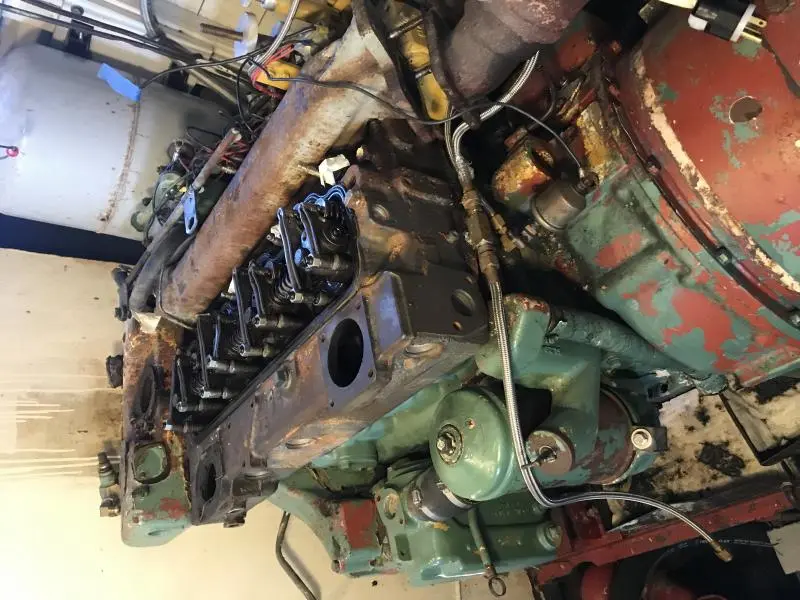
Thx for all.
Had already taken off air cleaner, extra expansion tank (left over from Florida owners in 196😎 and rocker cover, getting ready for Mr. "Go To" - so he could spend time (and my money) time more productively.
Next steps will be to check out that has been suggested - including draining coolant/oil mix and refill to prevent future probs
thx again for all
It has taken some time to make progress on this - given the boat's working schedule (using the back up generator) - and other commitments by the local "go to" Cat guy.
But my hat is off to ccjersey for his June 11, 2019 post - which I did not fully appreciate until the last week or so. And, interestingly, is the same advice from R. Go To, which is do not start tearing things apart of so quickly.
Mr Go To suggested - since he was tied up - to have me remove the oil pan and the plate above the oil pan (covering the entire bottom of the block), refill the engine with coolant and look for leaks. Turns out that no much leaked except in the area of the water pump/oil cooler.
Disassembling the water pump/oil cooler turns up a mess - which is good since a much easier fix than head gaskets, cylinder liners and all.
Am attaching pics of the disassembled mess - impeller torn up with shaft severed, etc.
In sourcing parts, looks like I can get individual parts from the factory, but whole assembled water pump is not available. Any other ideas welcome.
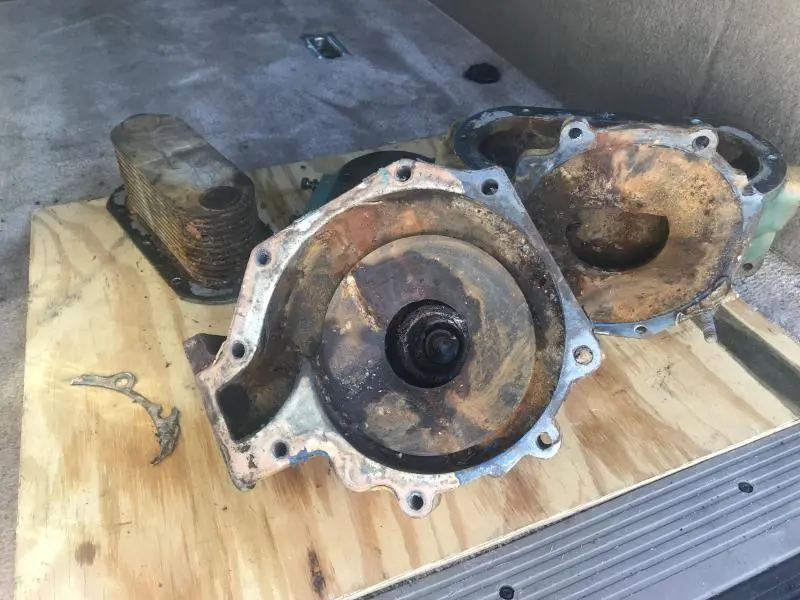
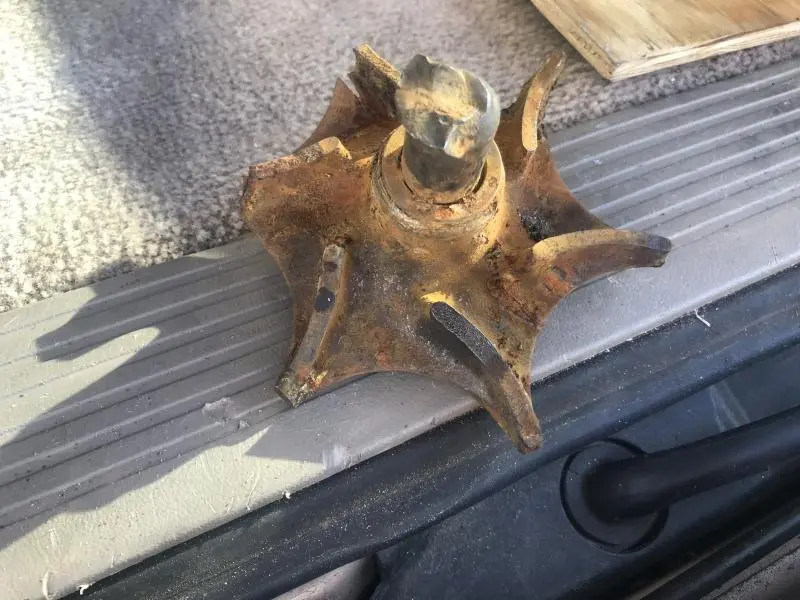
Is the water pump belt driven? If so, oil cooler core must be leaking?
Pleade check your PM. Thanks
